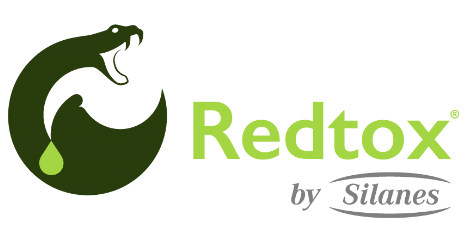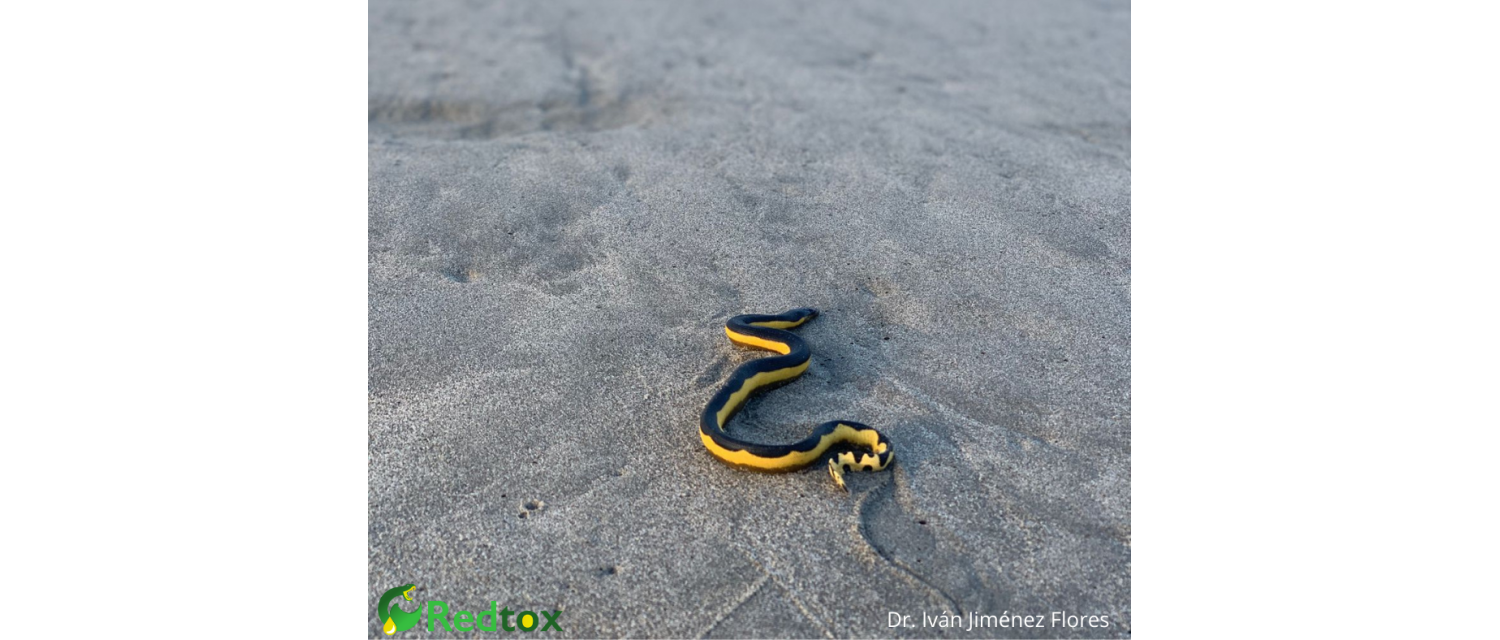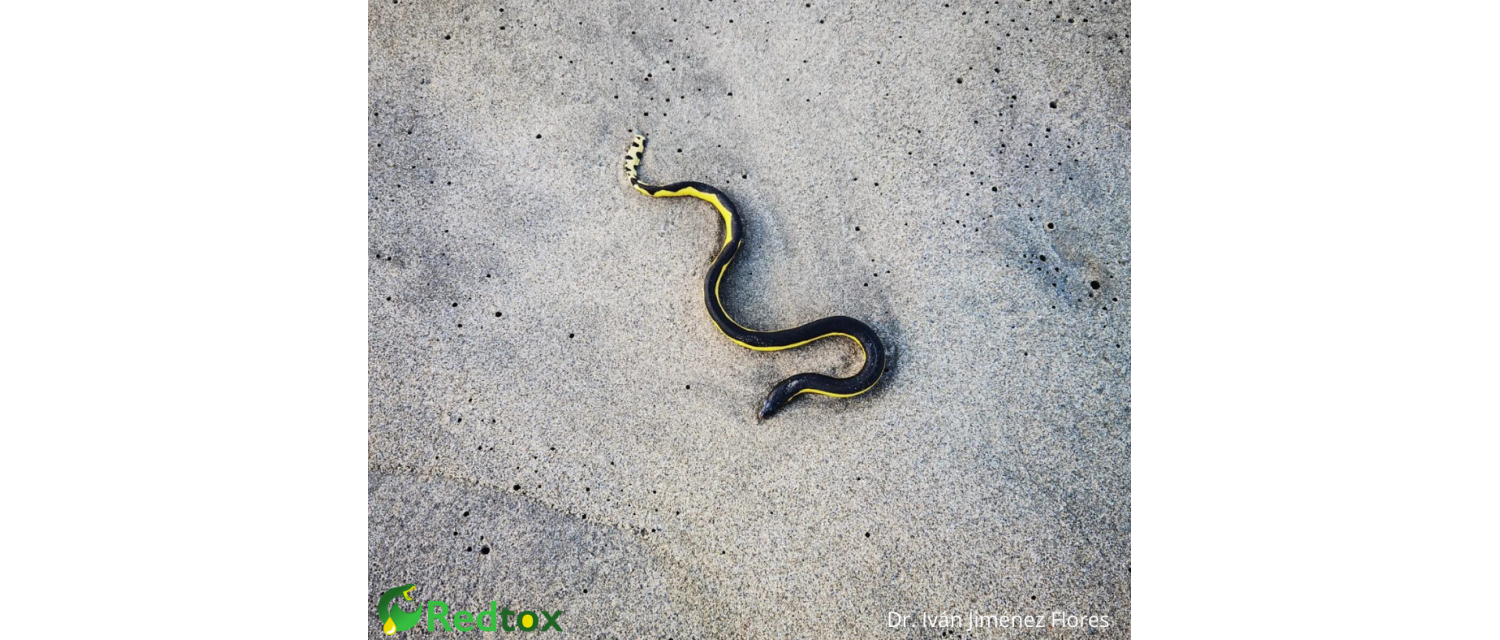
Hydrophis platurus
(Linnaeus, 1766)
Nombre común:
Reino:
Phylum:
Clase:
Orden:
Suborden:
Familia:
Género:
Especie:
Descripción:
P. platurus es la única especie del género. Fue descrita por Linnaeus en 1766 aunque bajo el nombre de Anguis platura, posteriormente Schneider en 1799 la coloca dentro del género Hydrus aunque ese mismo año la coloca dentro del género Pelamis. Se trata de la serpiente con mayor rango de distribución además de ser la única especie realmente pelágica, o sea que puede vivir en mar abierto, alejada de las costas. La literatura sobre ella es nutrida. Es muy característica en su coloración ya que presenta la porción ventral de color amarillo, mientras que la dorsal es de color negro. Generalmente estos colores son uniformes pero también pueden presentar series de puntos o barras en la sección amarilla. La porción amarilla también puede extenderse hacia la parte dorsal dejando únicamente una delgada línea negra. Se han encontrado organismos completamente amarillos pero son la excepción. El cuerpo de los individuos de esta especie está comprimido lateralmente adaptado completamente para la natación. De hecho, las escamas ventrales no le sirven en tierra y cuando por alguna razón llega un ejemplar a la playa, muere por deshidratación e insolación, imposibilitado de buscar refugio. Las escamas del cuerpo están yuxtapuestas y tienen forma subcuadrangular en la parte más gruesa de su cuerpo tiene de 49 a 67 filas, mientras que las ventrales son de 264 a 406 muy pequeñas. Su cabeza es estrecha y el hocico está elongado.
Tamaño:
Hábitos:
Alimentación:
Reproducción:
Número de crías:
Distribución geográfica:
Distribución en México:
- Baja California
- Baja California Sur
- Chiapas
- Colima
- Guerrero
- Jalisco
- Michoacán
- Nayarit
- Oaxaca
- Sinaloa
- Sonora
Hábitat:
Literatura citada:
1. Almendariz, A. 1991. Anfibios y Reptiles del Ecuador. Rev. Politecnica. XVI (3): 89-162.
2. Bauer, A. M. & Sadlier, R. A. (eds.) 2000. The herpetofauna of New Caledonia. Contributions to Herpetology, 17; Society for Study Amphibians and Reptiles, Ithaca, New York.
3. Bauer, A. M.; V. Jens V. 1990. A checklist and key to the herpetofauna of New Caledonia, with remarks on biogeography Proceedings of the California Academy of Science 47 (2): 17-45.
4. Boulenger, G. A. 1896. Catalogue of the snakes in the British Museum, Vol. 3. London (Taylor & Francis), xiv + 727 pp.
5. Bussarawitt, S.; Rasmussen, A. R. & Andersen, M. 1989. A preliminary study on sea snakes (Hydrophiidae) from Phuket Harbor, Phuket Island, Thailand. Nat. Hist. Bull. Siam Soc., Bangkok 37 (2): 209-225.
6. Campbell, J. A. & Lamar, W. W. 1989. The Venomous Reptiles of Latin America. Comstock Publishing/Cornell University Press, Ithaca.
7. Cogger, H. G. 2000. Reptiles and Amphibians of Australia, 6th ed. Ralph Curtis Publishing, Sanibel Island, 808 pp.
8. Cox, M. J.; Van Dijk, P. P.; J. Nabhitabhata & T., Kumthorn 1998. A Photographic Guide to Snakes and Other Reptiles of Peninsular Malaysia, Singapore and Thailand. Ralph Curtis Publishing, 144 pp.
9. Das, I. & Yaakob, N. 2007. Status of knowledge of the Malaysian herpetofauna. In Status of biological diversity in Malaysia & threat assessment of plant species in Malaysia. in: L. S. L. Chua, L. G. Kirton & L. G. Saw (eds.), Status of biological diversity in Malaysia & threat assessment of plant species in Malaysia. Forest Research Institute Malaysia, Kepong, pp. 31-81.
10. Daudin 1802. Histoire Naturelle, Générale et Particulière des Reptiles. vol. 7. Paris: Dufart, 436 pp.
11. Duméril, A. M. C., Bibron, G. & Duméril, A. H. A., 1854. Erpétologie générale ou histoire naturelle complète des reptiles. Tome septième. Deuxième partie, comprenant l'histoire des serpents venimeux. Paris, Librairie Encyclopédique de Roret: I-XII 781-1536.
12. Dunson, W. A.; M. Sherman A. 1978. Diversity, distribution, and Ecology of Philippine Marine Snakes (Reptilia, Serpentes) Journal of Herpetology 12 (3): 281-286.
13. Fischer, J. G. 1855. Die Familie der Seeschlangen systematisch beschrieben von J.G. Fischer Dr., ordentl. Lehrer der Realschule des Johanneums. In: Zu der öffentlichen Prüfung, welche mit den Zöglingen der Realschule Dienstag und Mittwoch , den 25. und 26. September 1855, vor Hamburg Johann August Meissner, 68 pp.
14. Fischer, J. G. 1856. Die Familie der Seeschlangen. Abhandl. Nat. Ver. Hamburg 3: 1-78.
15. Gibson-Hill, C. A. 1950. A note on the reptiles occurring on the Cocos-Keeling Islands. Bull. Raffl. Mus. No 22:206-211.
16. Gill, B. J. 1997. Records of turtles and sea snakes in NEW Zealand, 1837-1996. N Z J Marine Freshwater Res. 31: 477-486.
17. Glaw, F. & Vences, M. 1994. A Fieldguide to the Amphibians and Reptiles of Madagascar. Vences & Glaw Verlag, Köln (ISBN 3-929449-01-3).
18. Gray, J. E. 1842. Monographic Synopsis of the Water Snakes, or the Family of Hydridae. The Zoological Miscellany: 59-68.
19. Hallermann, J. 2007. Zur Geschichte der herpetologischen Sammlung des Zoologischen Museums Hamburgs, mit besonderer Berucksichtigung von Dr. Johann Gustav Fischer (1819 - 1889). Sekretär 7 (1): 20-32.
20. Hecht, M. K., Kropach, C. and Hecht, B. M. 1974. Distribution of the yellow-bellied sea snake Pelamis platurus, and its significance in relation to the fossil record. Herpetologica 30: 387-395.
21. Hernandez-Camacho, J. I.; R. Alvarez-Leon y J. M. Renjifo-Rey 2006. Pelagic sea snake Pelamis platurus (Linnaeus, 1766) (Reptilia: Serpentes: Hydrophiidae) is found on the Caribbean Coast of Colombia. Memoria de la Fundacion La Salle de Ciencias Naturales 164: 143-152.
22. Jongbloed, M. 2006. Field Guide to the reptiles and amphibians of the UAE - Wild about reptiles. ERWDA.
23. Karthikeyan S. & Balasubramanian, T. 2007. Species diversity of Sea Snake (Hydrophiidae) distributed in the Coramantal Coast (East Coast of India).l Int. J. Zool. res. 3 (3): 107-131.
24. Kharin, V. E. 2006. An Annotated Checklist of Sea Snakes of Vietnam, with Notes on a New Record of the Yellow-Lipped Sea Krait, Laticauda colubrina (Schneider, 1799) (Laticaudidae, Hydrophiidae). Russian Journal of Marine Biology 32 (4): 223–228.
25. Kharin, V. E. 2007. On the second record of Yellow-Bellied sea snake Pelamis platurus (Linnaeus, 1766) from Russia. Russian Journal of Herpetology 14 (1):45-49.
26. Kropach, C. 1975. The yellow-bellied sea snake, Pelamis, in the eastern Pacific. Pp. 185-213 in: Dunson, W., Ed. The Biology of Sea Snakes. Univ. Park Press, Baltimore, XI 530 pp.
27. Kropach, C. 1971. Sea snake (Pelamis platurus) aggregations on slicks in Panama Herpetologica 29 (2): 131-135.
28. Lehr, E. 2002. Amphibien und Reptilien in Peru. Natur und Tier-Verlag (Münster), 208 pp.
29. Leviton, A. E.; G. O.U. Wogan; M. S. Koo; G. R. Zug; R. S. Lucas and J. V. Vindum 2003. The Dangerously Venomous Snakes of Myanmar Illustrated Checklist with Keys. Proc. Cal. Acad. Sci. 54 (24): 407–462.
30. Linnaeus, C. 1766. Systema naturæ per regna tria naturæ, secundum classes, ordines, genera, species, cum characteribus, differentiis, synonymis, locis. Tomus I. Editio duodecima, reformata. Laurentii Salvii, Stockholm, Holmiae. 1-532 pp.
31. Mattison, C. 2007. The New Encyclopedia of Snakes. Princeton University Press.
32. McCoy, M. 2000. Reptiles of the Solomon Islands. ZooGraphics, Kuranda (Australia), CD-ROM.
33. Mori, M. 1982. Japans Schlangen, Vols. 1-3 (80, 102, 123 pp.). Tokyo (Igaku-Shoin Ltd.).
34. Murphy, M. J. 1994. Reptiles and amphibians of Seven Mile Beach National park, NSW. Herpetofauna (Sydney) 24 (2): 24-30.
35. Murphy, J. C.; Cox, M. J. & Voris, H. K. 1999. A key to the sea snakes in the gulf of Thailand. Nat. Hist. Bull. Siam Soc. 47: 95-108.
36. Pickwell, G. V., & CULOTTA, W. A. 1980. Pelamis, P. platurus. Catalogue of American Amphibians and Reptiles No. 255: 1-4.
37. Porras, L. W. & Solórzano, A. 2006. Die Schlangen Costa Ricas. Reptilia (Münster) 11 (5): 20-27.
38. Porras, L. W. & Solórzano, A. 2006. Costa Rica’s venomous snakes. Reptilia (GB) (48): 11-17.
39. Rafinesque, C. S. 1817. Dissertation on water snakes, sea snakes and sea serpents. American Month. Mag. Crit. Rev. 1: 431-436.
40. Schlegel, H. 1837. Essai sur la physionomie des serpens. Partie Générale: XXVIII 251 S. Partie Descriptive: 606 S. XVI. La Haye (J. Kips, J. HZ. et W. P. van Stockum).
41. Schneider, J. G. 1799. Historiae Amphibiorum narturalis et literariae. Fasciculus primus, continens Ranas. Calamitas, Bufones, Salamandras et Hydros. Jena, 266 S.
42. Scott Jr., N. J. & Limerick, S. 1983. Reptiles and Amhibians. In: Janzen, D.H. (ed.) Costa Rican Natural History. Univeristy of Chicago Press, pp. 351
43. Sharma, R. C. 2004. Handbook Indian Snakes. AKHIL BOOKS, New Delhi, 292pp.
44. Smith, M. A. 1943. The Fauna of British India, Ceylon and Burma, Including the Whole of the Indo-Chinese Sub-Region. Reptilia and Amphibia. 3 (Serpentes). Taylor and Francis, London. 583 pp.
45. Stebbins, R. C. 1985. A Field Guide to Western Reptiles and Amphibians, 2nd ed. Houghton Mifflin, Boston.
46. Stejneger, L. H. 1907. Herpetology of Japan and adjacent territory. Bull. US. Natl. Mus., Washington, 58: xx, 1-577.
47. Swash, A. & Still, R. 2000. Birds, Mammals and Reptiles of the Galapagos Islands. Pica Press, 168 pp.
48. Taylor, E. H. 1951. Early records of the seasnake Pelamis platurus in Latin America. Copeia 1951 (2): 124.
49. Van Denburgh, J. 1912. Expedition of the California Academy of Sciences to the Galapagos Islands, 1905-1906. IV. The snakes of the Galapagos Islands. Proc. California Acad. Sci. (Ser. 4) 1: 323-374.
50. Van der Kooij, J. 2001. The herpetofauna of the Sultanate of Oman: Part 5: Checklist of the reptiles and amphibians of Oman, and bibliography. Podarcis 2 (3): 93-102.



